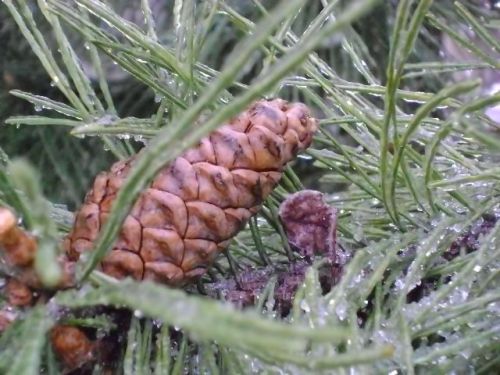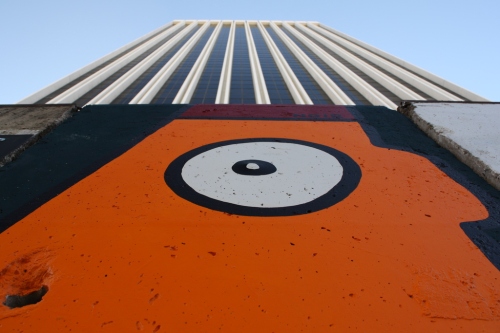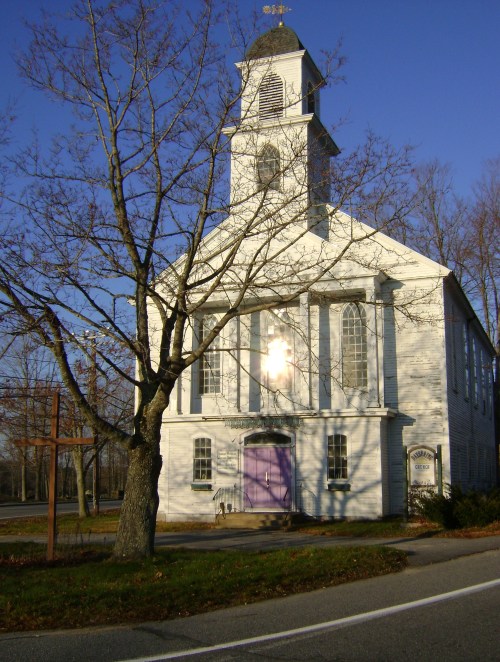I was thinking about our flash photography assignment and thinking about the on camera flash that we all have and how to get better results from those flashes. So I was googling around looking for products that you can buy to help diffuse the flash. Usually the on camera flash if very harsh and very strong and overwhelming to whatever you are photographing. I have to admit this is really the first test I’ve made in a long time of my on camera flash vs. my off the camera flash. The results were surprising to me…the results are close. I think what’s happened is the sensors on the camera and the flashes are incredibly sensitive and have come a long way. I’m very excited to see everyone’s pictures at the end of the month to see what kind of results good and bad that you are getting with your flash and your thoughts.
 Back to my diffuser idea. On my extra flash I have pulled down the diffuser screen and attached the diffuser box on top of the flash then. I generally try to get a soft almost natural light to my flash work especially when they involve people. I’m looking for something that is flattering to skin tones and not strong. So I’ve seen this little device made by Gary Fong called the Puffer-Pop-up diffuser which is basically what I wondering about. Then I started wondering if there was anything I could make that would diffuse it. I’m a big one for googling first rather than
Back to my diffuser idea. On my extra flash I have pulled down the diffuser screen and attached the diffuser box on top of the flash then. I generally try to get a soft almost natural light to my flash work especially when they involve people. I’m looking for something that is flattering to skin tones and not strong. So I’ve seen this little device made by Gary Fong called the Puffer-Pop-up diffuser which is basically what I wondering about. Then I started wondering if there was anything I could make that would diffuse it. I’m a big one for googling first rather than  reinventing the wheel. Lo and behold I found a guy who was having the same thought. He made a little diffuser, here’s his DIY flash diffuser so you can basically see how to make one yourself. So this afternoon I tried to replicate his diffuser and here are my results. I tested my on camera flash with my homemade diffuser against my added flash straight and then with the diffuser box on it. The results are not as obvious as I thought they would be. They are more subtle but still there. Taking pictures vertically with the homemade diffuser might be a little hard…just because it kinda just sits on top of the camera and might want to fall off if turned vertically.
reinventing the wheel. Lo and behold I found a guy who was having the same thought. He made a little diffuser, here’s his DIY flash diffuser so you can basically see how to make one yourself. So this afternoon I tried to replicate his diffuser and here are my results. I tested my on camera flash with my homemade diffuser against my added flash straight and then with the diffuser box on it. The results are not as obvious as I thought they would be. They are more subtle but still there. Taking pictures vertically with the homemade diffuser might be a little hard…just because it kinda just sits on top of the camera and might want to fall off if turned vertically.
Picture 1 is using my on camera flash straight …on the auto setting letting the camera control everything. Look for small shadows in the windows and the shingles in the houses for detail.

Picture 2 is using my on camera flash but popping my homemade diffuser on top. Notice the subtle warmer color of the bricks and the better detail in the houses and their colors–especially the roofs and shingles. These are a little more vibrant in their color.

Picture 3 is using my additional flash (Nikon SB-900) and having it at the 90 degree bend so that the flash head is directly facing the subject. I think the results are similar to picture 1. Again differences are subtle here.

And finally Picture 4 is putting all my diffuser gear on my flash head and shooting and bouncing my flash off my white ceiling.

I think the desired lighting effects are on Picture 2 & Picture 4. I was really surprised at how much the little DIY diffuser worked. One more little comparison for you with skin tones.
Picture A of Erin is with my built in camera flash straight up – letting the camera decide all settings.
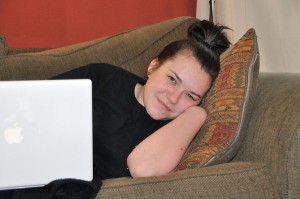
Picture B of Erin is adding my little homemade diffuser.
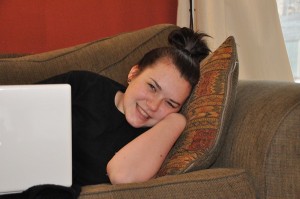
Here again…subtle but warmer tones. Shelley I wish I could think of a way to effect your flash on your camera just for you to experiment but for now you get a pass on this…maybe I’ll come up with a little contraption for you too one day!
If you like the warm effects you might want to invest in the Gary Fong product just for longevity sake since it’s made of a hard plastic. But I think the homemade diffuser lets you play a little and lets you look for those changes in light that you can effect.
So for the Optional Assignment #5 Diffusing the flash on your camera — make or buy a diffuser and show us your before and after shot and tell us what you think. Don’t hesitate to add questions to the comment section here – and happy shooting!



















